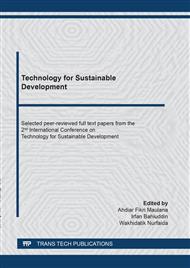p.23
p.33
p.43
p.49
p.59
p.65
p.75
p.83
p.91
Application of RMR, Q, and Japanese Rock Mass Classification Systems for Design of Support Systems of the Narogong Weir Diversion Tunnel, West Java, Indonesia
Abstract:
This study aimed to propose alternative support systems for a diversion tunnel at the Narogong Weir, West Java, based on the Rock Mass Rating (RMR), Tunnelling Quality Index (Q), and Japanese Rock Mass Classification systems. Surface geological mapping, drill core evaluation, and laboratory testing were conducted to characterize the engineering geological conditions of the tunnel construction site. The results showed that the study area consisted of alternating layers of siltstone and marlstone of the Jatiluhur Formation. Joints and an anticline are the main geological structures observed in the study area. The uniaxial compressive strength (UCS) values of the intact rocks ranged from 4 to 25 MPa. The rock masses were classified into poor to fair classes. The diversion tunnel was divided into two segments of tunnel support systems. Although the support system characteristics are slightly varied, in general, the rock mass classifications recommended rock bolts and shotcrete as the primary tunnel support systems.
Info:
Periodical:
Pages:
59-64
Citation:
Online since:
April 2022
Keywords:
Price:
Сopyright:
© 2022 Trans Tech Publications Ltd. All Rights Reserved
Share:
Citation:


